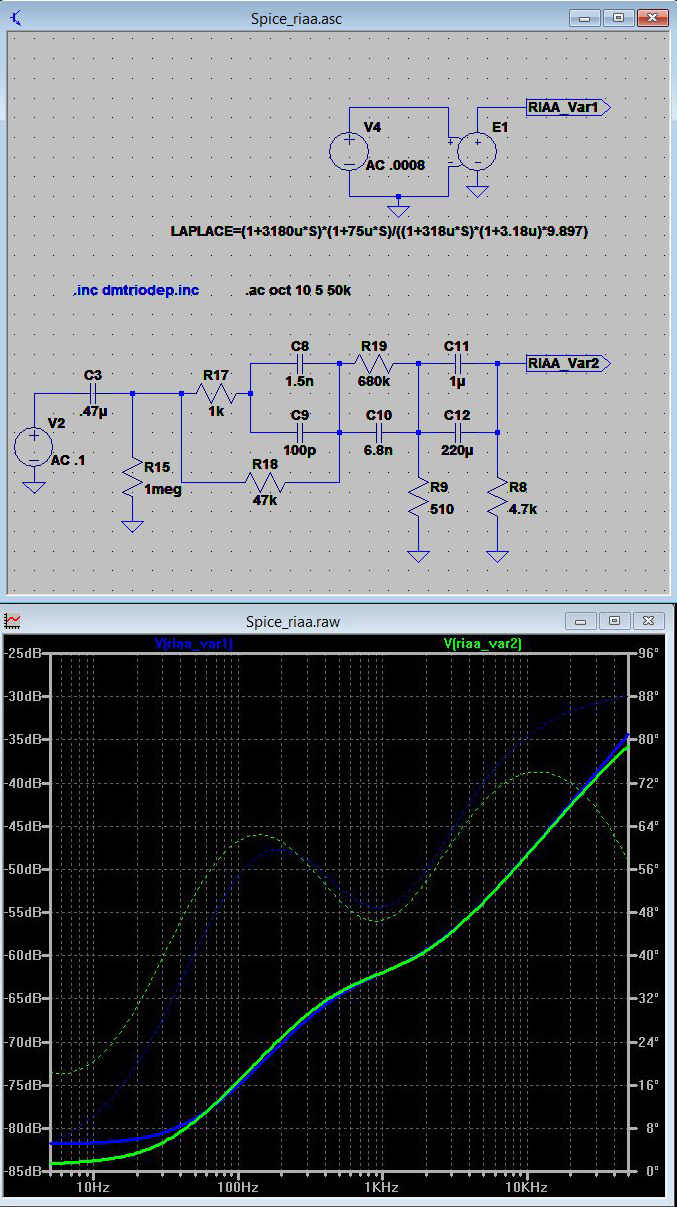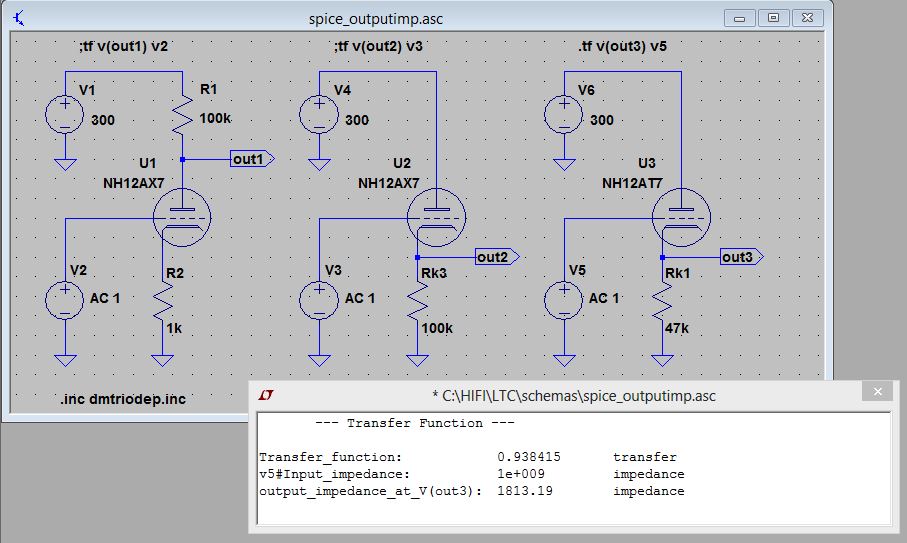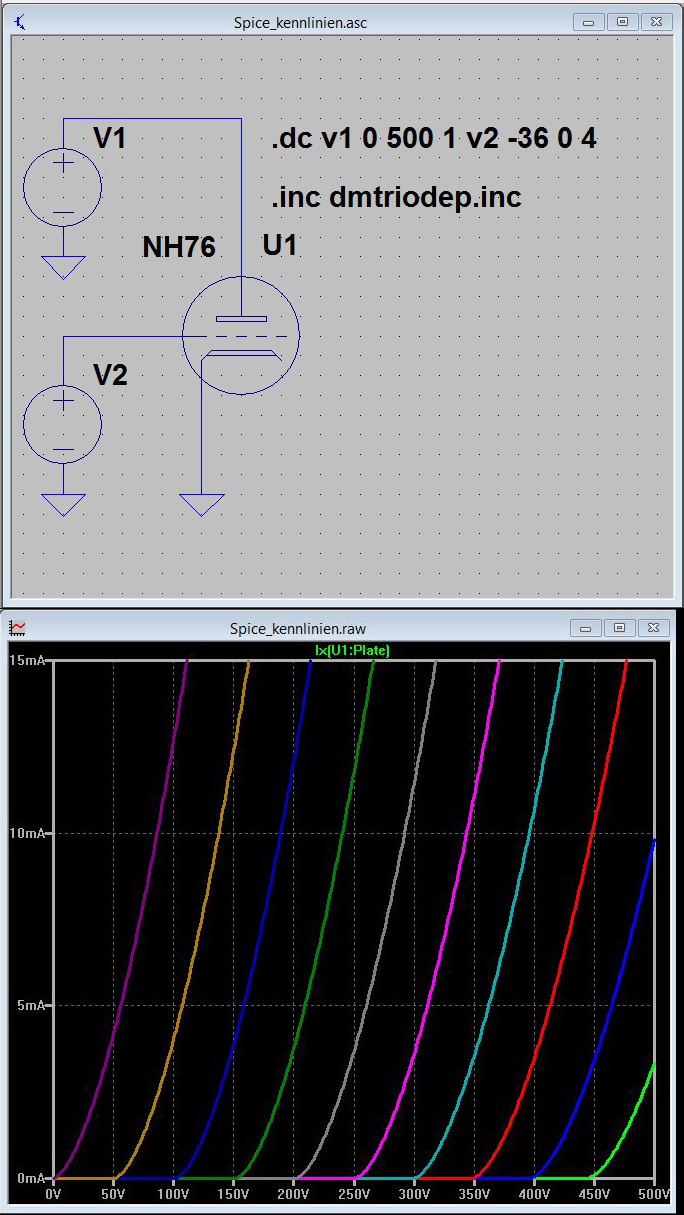Simulations of tube circuits with Spice
- Molecular Cuisine -(回路真空管アンプシミュレーション | 电子管放大器電路模擬)
Circuit simulations with Spice systems are not necessarily required for simple triode circuits. At worst, the results are deceptive, since the computational accuracy of course doesn’t match the fluctuations of the real components and construction-related dependencies.
You can find many tube models and instructions for the implementation in PSpice or LTSpice here
Nevertheless, you can use Spice as some kind of ‘pimped-out’ calculator. Some practical applications:
Frequency Response Analysis for Phono Stages
The calculation of the equalizer networks of phono preamplifiers by hand is rather complex and cumbersome.It is easier to figure out in Spice. In Spice you can easily fiddle around with the values of the individual components, and immediately view the results directly in the frequency response.
An inverse RIAA - signal is used as an input, either as a passive pre-distorted signal, or as a Laplace function of an AC voltage source (Download LTSpice file):
 Pre-distortion of the phono input signal acc. to RIAA
Pre-distortion of the phono input signal acc. to RIAA
Determining the Output Impedance
This is practically the determination of the output impedance of a circuit by means of the DC transfer function ‘.tf’. This is shown in the example with 3 different circuits. When you begin the calculation you have to select the respective .tf command and mark the others as comments (Download LTSpice file): Determining the output impedance with LTSpice
Determining the output impedance with LTSpice
Displaying the Parameters of the Tube Models
You can also easily view the parameters of the tube models used and compare them with the parameters from the data sheets.Simply adjust the basic parameters of the anode voltage and the negative grid voltage (starting value, final value, increment) and display the current flow through the tube (Download LTSpice file):
 Displaying the tube parameters with LTSpice
Displaying the tube parameters with LTSpice